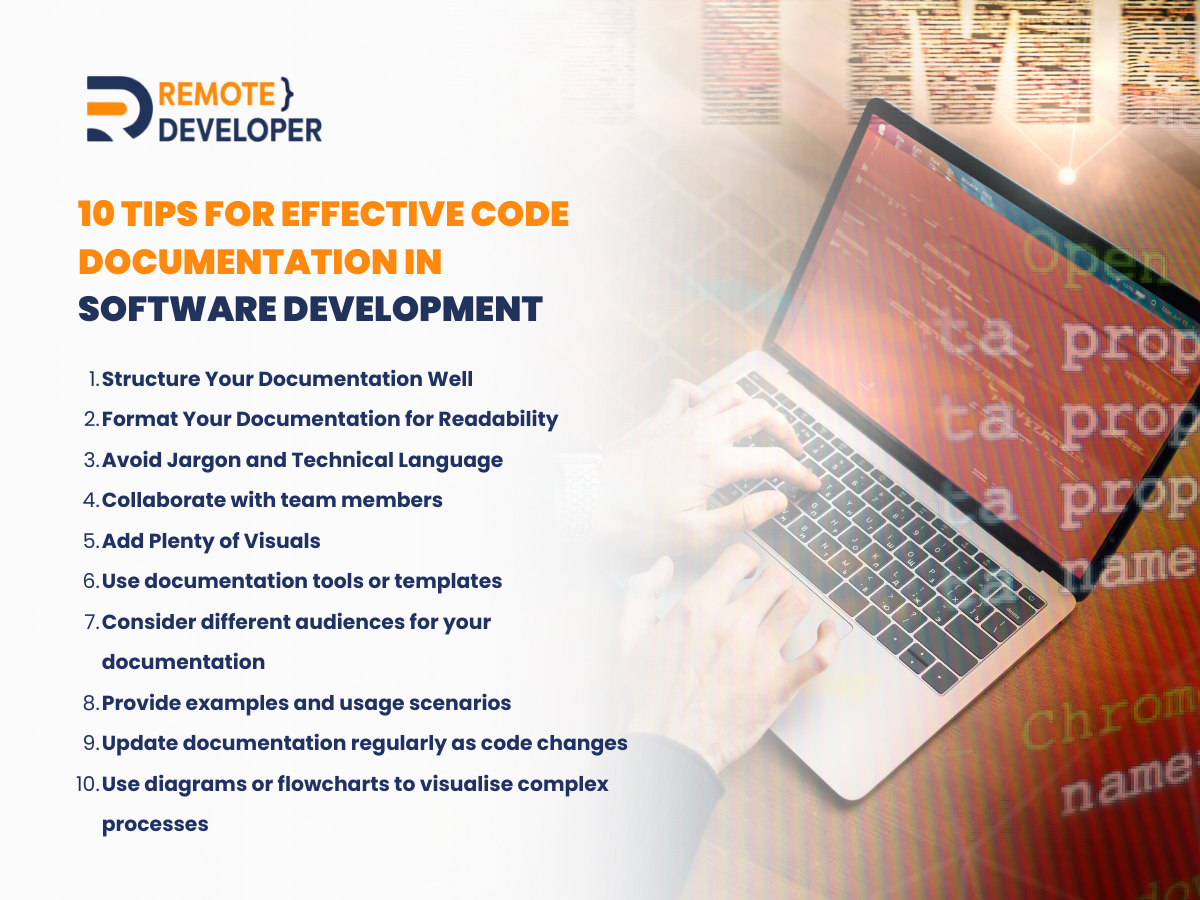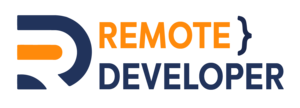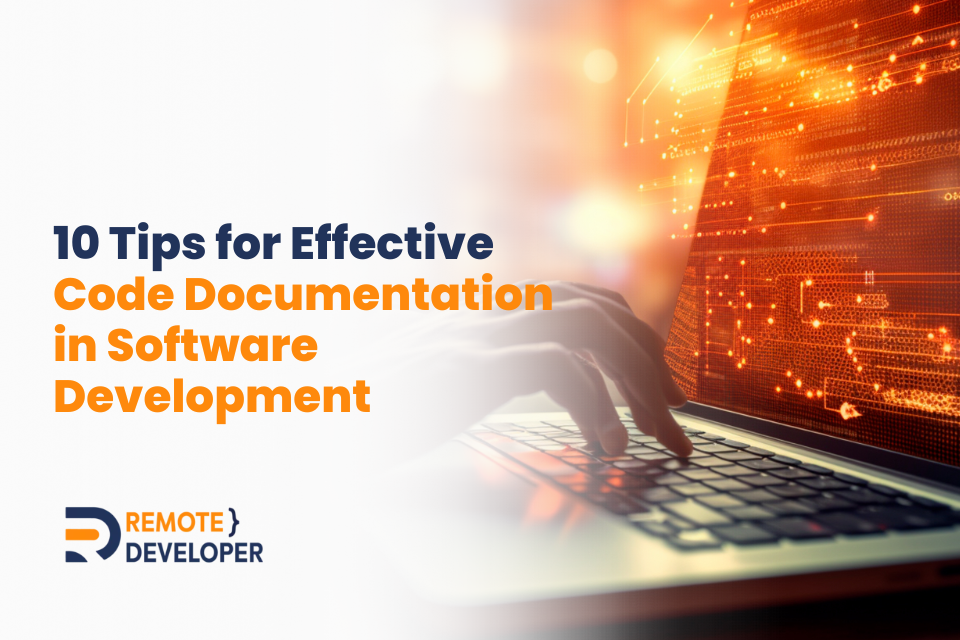Adequate code documentation is a crucial aspect of software development projects. It is pivotal in ensuring code clarity, facilitating team members’ collaboration, and providing software engineers with a reference manual. Code documentation encompasses relevant code snippets, essential details, and guidelines that aid new team members and stakeholders in understanding the functionality of the software’s source code.
In this blog, we will explore the best practices for code documentation, including tips on structuring, formatting, updating, and collaborating, all of which contribute to adequate code documentation.
What is Code Documentation in Software Development?
In software development, code documentation refers to creating a detailed guide that explains the functionality, purpose, and usage of code snippets. It provides valuable insights to software engineers, new team members, and stakeholders, aiding them in understanding the source code.
Code documentation can take various types, including API documentation, code comments, and README files, all of which contribute to clean code and best practices in software development.
What makes the perfect code documentation?
Perfect code documentation follows best practices and ensures clean and good documentation practices. First and foremost, effective comments are crucial for code documentation, providing additional information and context about specific code snippets.
A detailed guide helps software engineers understand the code’s functionality, purpose, and usage. Proper documentation utilises plain text and technical writing principles to ensure readability. It encompasses relevant code snippets, code examples, and code management practices, contributing to appropriate and adequate documentation.
10 Tips for Effective Code Documentation
Now, let’s explore ten essential tips for adequate code documentation, from structuring and formatting the documentation to collaborating with team members and utilising documentation tools or templates.

1. Structure Your Documentation Well
One of the primary code documentation tips is structuring it effectively. This involves utilising a documentation platform that supports proper code management, such as Markdown, README, or HTML.
Start by defining a transparent header for your documentation, outlining its purpose, functionality, and other relevant details. Organise the documentation by logically grouping related functionalities and modules, enhancing code management and readability.
Include information about dependencies, installation instructions, and project structure, ensuring a comprehensive documentation structure for software engineers and stakeholders.
2. Format Your Documentation for Readability
Proper formatting plays a vital role in enhancing code documentation readability. Adhering to technical writing conventions and employing plain text will guarantee that the documentation remains easily comprehensible for both software engineers and new team members.
As such, here are a few code documentation tips for formatting code documentation effectively:
- Utilise markdown or plain text for clarity and simplicity.
- Break down the documentation into subsections or headings to improve scannability.
- Use proper code snippets or examples to illustrate code functionality.
- Incorporate code comments within the documentation to provide additional information and context.
- Highlight essential words or critical concepts using bold formatting to draw attention.
Implementing the abovementioned formatting can enhance the readability and comprehensibility of your code documentation. This makes it easier for software engineers and stakeholders to understand and work with the codebase.
3. Avoid Jargon and Technical Language
When crafting code documentation, it’s crucial to prioritise accessibility for diverse audiences. As such, avoid jargon and technical language, opting instead for plain text and straightforward expressions.
This approach ensures newcomers and stakeholders without technical expertise can easily comprehend the documentation. Likewise, it can also facilitate collaboration between team members and stakeholders. ‘
Remember, good documentation is a shared responsibility, and creating documentation that is easily accessible and understandable is a good idea for effective code management. With that said, incorporating these code documentation tips into your practices enhances your documentation’s overall clarity and usefulness.
4. Collaborate with team members
Collaboration among team members is critical to adequate code documentation. Involving programmers ensures that the documentation accurately reflects the codebase and its functionality. In addition, encouraging teamwork and open communication enables team members to develop precise documentation that faithfully represents the software project. This, in turn, supports effective code management and facilitates knowledge sharing.
As such, here are some code documentation tips to ensure collaboration:
- Define clear responsibilities for code documentation within the development team.
- Establish a workflow or process for code documentation, ensuring everyone is involved.
- Regularly review and provide feedback on code documentation to ensure accuracy and completeness.
- Foster open communication channels to address questions, concerns, and updates to the documentation.
- Collaborate on API documentation, enabling seamless integration and alignment within the software project.
5. Add Plenty of Visuals
Adding visuals like code snippets, screenshots, diagrams, and flowcharts can significantly enhance code documentation. Visuals help communicate complex information, code functionality, and software project structure in a more intuitive and accessible way.
By including relevant visuals, software engineers, new team members, and stakeholders can better understand code snippets, dependencies, and project architecture.
Additionally, visuals help in effective code management, as they serve as a visual reference for software engineers and stakeholders, facilitating code comprehension, maintenance, and troubleshooting.
6. Use documentation tools or templates
Using documentation tools or templates can streamline the process of code documentation and improve its efficiency and consistency. These tools provide features that enable code management, version control, and seamless integration with code repositories. In addition, documentation templates specific to software development, APIs, or project structure can provide a starting point and ensure a consistent documentation style across the software project.
You can choose from various documentation tools and frameworks online, such as Sphinx, Git, or documentation platforms within integrated development environments (IDEs).
By capitalising on these code documentation tips, tools, and templates, software engineers can not only save time but also uphold consistency, allowing them to direct their attention toward implementing effective code documentation practices.
7. Consider different audiences for your documentation
When creating code documentation, it is essential to consider the different audiences using it. These audiences may include stakeholders, software engineers, and new team members, each with varying levels of technical knowledge.
To cater to diverse audiences effectively, consider the following code documentation tips:
- Address technical and non-technical users, providing an overview and detailed information where necessary.
- Adapt the documentation to align with the knowledge level and requirements of the intended audience.
- Ensure the documentation is accessible, understandable, and relevant to all users.
- Provide explanations, examples, and code snippets geared toward different levels of technical expertise.
- Consider the requirements and expectations of stakeholders, software engineers, and new team members to create documentation that meets their needs.
8. Provide examples and usage scenarios
One effective way to enhance code documentation is by providing code snippets, examples, and usage scenarios. These practical illustrations help software engineers, new team members, and stakeholders understand how to use the code and its functionality.
Consider the following code documentation tips when providing examples and usage scenarios in code documentation:
- Include relevant code snippets to demonstrate specific functionalities or features.
- Offer code examples that showcase different use cases of the codebase.
- Provide real-world examples to illustrate the application and benefits of the code.
- Add comments to code examples for additional information and context.
- Incorporate usage scenarios that outline step-by-step instructions for utilising the code.
9. Update documentation regularly as code changes
As software development is an iterative process, code changes frequently. Likewise, it is crucial to maintain code documentation to reflect the current state of the codebase accurately. Keeping the documentation up to date ensures software engineers, new team members, and stakeholders can access reliable documentation to understand, modify, and enhance the software project.
With that said, remember to regularly review and revise your code documentation. Timely documentation of new functionalities, code modifications, and pertinent code snippets is critical. This proactive approach by software engineers guarantees that the codebase remains well-documented, promoting ease of code comprehension, facilitating maintenance, and fostering collaborative efforts among team members.
Regularly implementing these code documentation tips enhances the overall effectiveness of the documentation process in the ever-evolving realm of software development.
10. Use diagrams or flowcharts to visualise complex processes
Visualising complex code processes through diagrams or flowcharts is an effective way to enhance code documentation. These visual aids represent intricate code structures, dependencies, and data flows, making it easier for software engineers, new team members, and stakeholders to comprehend them.
When using diagrams or flowcharts, consider the following code documentation tips:
- Employ diagrams and flowcharts to illustrate code functionality, algorithms, or software project structure.
- Use clear labels, arrows, and symbols to represent different components, data flows, or dependencies.
- Simplify complex processes by breaking them down into logical steps or stages.
- Incorporate diagrams or flowcharts within the code documentation to provide visual reference points.
- Leverage diagramming tools or code documentation platforms that support the inclusion of visual aids.
Conclusion
In conclusion, effective code documentation is crucial for successful software development. It ensures that your code is understandable, maintainable, and scalable. Following the code documentation tips mentioned above will help you create accessible documentation for technical and non-technical stakeholders.
And remember, documentation is not a one-time task; it should be an ongoing process as code changes. Want to learn more software development tips? Read our blogs!

